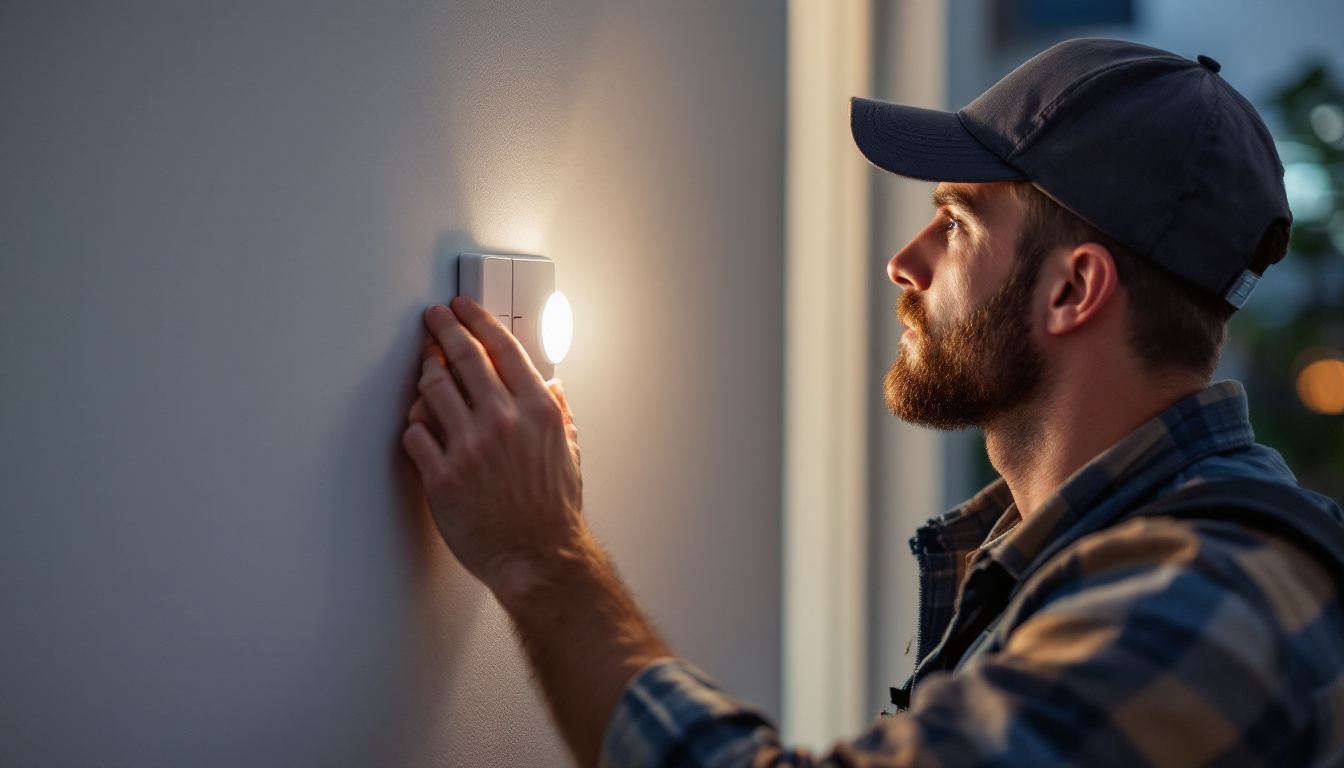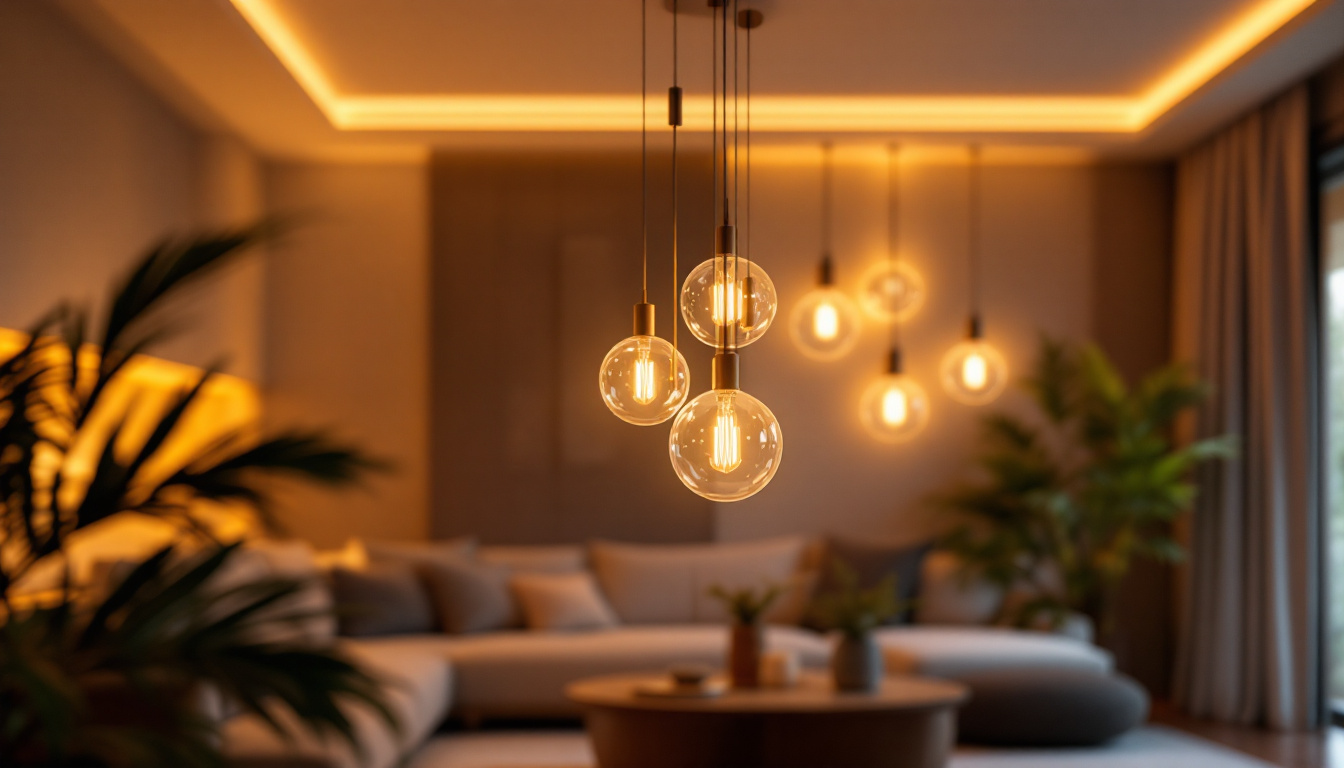
Motion detection switches are essential components in modern lighting systems, providing convenience and energy efficiency. These devices automatically turn lights on or off based on the presence of motion within a designated area, making them ideal for both residential and commercial applications. For lighting contractors, understanding the various types of motion detection switches and their functionalities is crucial for delivering optimal solutions to clients.
There are primarily three types of motion detection technologies used in switches: passive infrared (PIR), ultrasonic, and dual technology. Each type has its own advantages and limitations, making it important for contractors to understand their unique characteristics.
PIR sensors detect changes in infrared radiation, which is emitted by warm bodies. They are highly effective in detecting motion within a specific range and are often used in residential settings. Ultrasonic sensors, on the other hand, emit high-frequency sound waves that bounce off objects and return to the sensor. They are more sensitive and can detect motion through obstacles, making them suitable for larger areas. These sensors are particularly useful in hallways or open spaces where movement may not always be direct or line-of-sight.
Dual technology combines both PIR and ultrasonic sensors, providing a more reliable solution by reducing false triggers. This technology is particularly beneficial in environments where pets or other moving objects may cause unwanted activation. By utilizing both sensing methods, dual technology switches can differentiate between human movement and other disturbances, ensuring that lights are activated only when truly necessary. This feature not only enhances user experience but also prolongs the lifespan of the lighting fixtures by preventing unnecessary use.
When selecting motion detection switches, several key features should be taken into account. These include sensitivity settings, time delay options, and coverage area. Sensitivity settings allow contractors to adjust the sensor’s responsiveness to motion, which can help minimize false activations. Time delay options determine how long the lights will remain on after motion is detected, providing flexibility for different applications. For instance, in a bathroom setting, a shorter time delay might be appropriate, while in a warehouse, a longer delay could be more beneficial to accommodate the flow of foot traffic.
The coverage area is another critical factor. Different sensors have varying detection ranges, and understanding the specific needs of a project will help in selecting the right product. For instance, larger commercial spaces may require sensors with a broader coverage area, while smaller residential settings might benefit from more focused detection. Additionally, the mounting height and angle of the sensor can significantly influence its effectiveness. Proper installation ensures that the sensor can accurately detect movement without being obstructed by furniture or other objects, maximizing its utility in any given space. Furthermore, some advanced models come equipped with adjustable lenses that can be fine-tuned to suit specific layouts, providing even greater customization for unique environments.
Motion detection switches are versatile and can be employed in a variety of settings. From residential homes to commercial buildings, their applications are vast and varied. Understanding these applications can help lighting contractors recommend the most suitable solutions for their clients.
In residential settings, motion detection switches are commonly installed in hallways, bathrooms, and outdoor areas. They enhance convenience by automatically turning lights on when someone enters a room and off when the space is vacated. This not only improves user experience but also contributes to energy savings, as lights are not left on unnecessarily.
Additionally, outdoor motion detection lights can enhance security by illuminating pathways and entry points when movement is detected. This feature can deter potential intruders and provide homeowners with peace of mind. Furthermore, these systems can be integrated with smart home technology, allowing homeowners to receive alerts on their smartphones whenever motion is detected, thus adding an extra layer of security and control over their living environment.
Motion detection switches can also be particularly beneficial for elderly or disabled individuals, as they reduce the need to fumble for light switches in dark or unfamiliar spaces. This accessibility feature not only promotes independence but also enhances safety, as it minimizes the risk of falls or accidents in poorly lit areas.
In commercial environments, motion detection switches can optimize energy usage and improve safety. Offices, warehouses, and retail spaces can benefit from automated lighting systems that respond to occupancy. For instance, in an office setting, lights can turn off in unoccupied areas, reducing energy costs significantly.
Moreover, in warehouses, motion detection switches can enhance safety by ensuring that workspaces are adequately lit when personnel are present. This can help prevent accidents and improve overall productivity. In retail environments, strategically placed motion sensors can also be used to create dynamic lighting effects that respond to customer movement, enhancing the shopping experience and drawing attention to specific displays or products.
Additionally, these systems can be integrated with energy management systems to provide real-time data on occupancy patterns. This information can be invaluable for businesses looking to optimize their energy consumption and reduce operational costs. By analyzing this data, companies can make informed decisions about their lighting needs, ensuring that they are only using energy when necessary, which is not only cost-effective but also environmentally friendly.
Choosing the right motion detection switch involves considering various factors that can influence performance and suitability for specific applications. Lighting contractors must assess these factors to ensure optimal installation and functionality.
The environment in which the motion detection switch will be installed plays a significant role in its performance. Factors such as temperature, humidity, and the presence of obstacles can affect how well a sensor detects motion. For example, PIR sensors may struggle in environments with fluctuating temperatures, while ultrasonic sensors may be less effective in spaces with excessive noise.
Contractors should evaluate the specific conditions of the installation site and choose a sensor type that is best suited for those conditions. This may involve consulting with manufacturers or conducting site assessments to determine the most effective solution.
The installation location is another critical consideration. Motion detection switches should be placed in areas where they can effectively monitor movement without obstructions. For instance, placing a sensor in a corner may provide a broader field of view than mounting it flat against a wall.
Additionally, the height at which the sensor is installed can impact its effectiveness. Contractors should follow manufacturer guidelines regarding installation height to ensure optimal performance and coverage.
Proper installation of motion detection switches is essential for maximizing their effectiveness. Lighting contractors should adhere to best practices to ensure that the devices function as intended and provide the desired benefits.
Each motion detection switch comes with specific installation instructions provided by the manufacturer. It is crucial for contractors to carefully read and follow these guidelines to avoid issues during installation. This includes understanding wiring requirements, sensor placement, and calibration settings.
Failure to adhere to these instructions can lead to suboptimal performance or even damage to the device. Therefore, taking the time to understand the product specifications is a fundamental step in the installation process.
After installation, testing and calibration are vital steps to ensure that the motion detection switch operates correctly. Contractors should conduct thorough tests to verify that the sensor detects motion as expected and that the lighting responds appropriately.
Calibration may involve adjusting sensitivity settings and time delays to suit the specific environment and user preferences. This process ensures that the switch operates efficiently, reducing the likelihood of false triggers or missed detections.
Regular maintenance of motion detection switches is essential for long-term performance. Lighting contractors should educate clients on the importance of upkeep and provide guidance on how to maintain these devices effectively.
Conducting routine inspections of motion detection switches can help identify potential issues before they become significant problems. Contractors should recommend that clients check the sensors periodically for dirt, dust, or obstructions that may hinder performance.
Additionally, inspecting the wiring and connections can help ensure that the device remains operational. Any signs of wear or damage should be addressed promptly to prevent further complications.
As environments change, the settings of motion detection switches may need to be updated. For instance, if a room undergoes renovations or if furniture is rearranged, the sensor’s coverage area may be affected. Contractors should advise clients to reassess sensitivity and time delay settings periodically to ensure optimal performance.
By staying proactive about these adjustments, clients can maintain the efficiency and effectiveness of their motion detection lighting systems.
Choosing the right motion detection switch is a critical task for lighting contractors. By understanding the various types of sensors, their applications, and the factors influencing their performance, contractors can provide tailored solutions that meet client needs. Proper installation and maintenance practices further enhance the effectiveness of these devices, ensuring that they deliver the desired benefits over time.
As the demand for energy-efficient and convenient lighting solutions continues to grow, motion detection switches will play an increasingly important role in both residential and commercial settings. By staying informed and adapting to advancements in technology, lighting contractors can position themselves as experts in this evolving field.
Ready to elevate your lighting projects with the most reliable motion detection switches on the market? Look no further than LumenWholesale, where we specialize in providing contractors with spec-grade lighting products at unbeatable wholesale prices. Say goodbye to local distributor markups and hello to our extensive selection that meets the highest industry standards. With LumenWholesale, you’ll find the perfect blend of quality, affordability, and convenience, plus the added benefit of hassle-free bulk buying with free shipping. Don’t compromise on your lighting needs—choose LumenWholesale for premium lighting at the best value. Wholesale Lighting at the Best Value.

Discover the innovative strategies smart lighting contractors use to transform spaces with lamp chandeliers.

Discover the top strategies lighting contractors use to choose the perfect LED bulb types for any project.

Discover the common pitfalls lighting contractors face when installing four-foot LED shop lights.

Discover how to enhance profitability in lighting installations with strategic insights into light post lights.